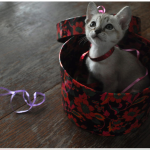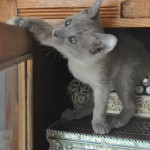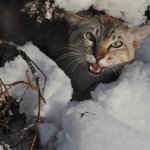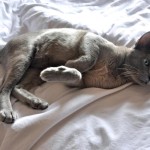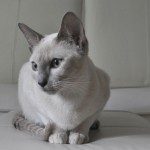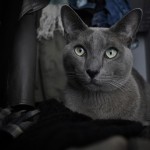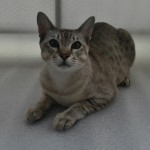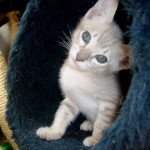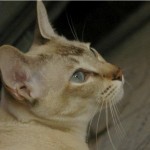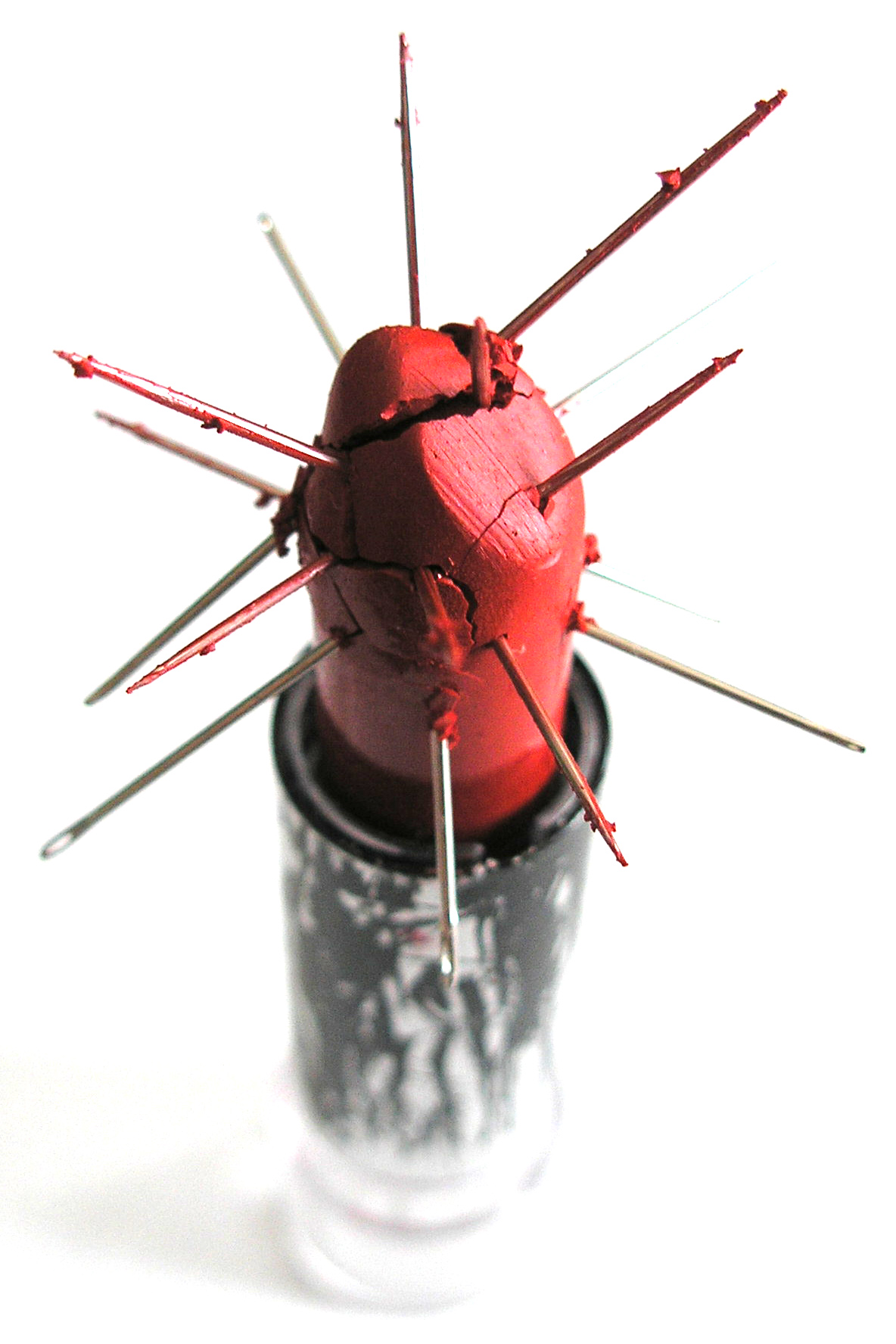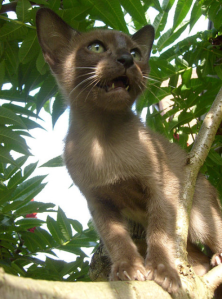
Their colour range is very wide (see examples in the pics below), and determining their exact colour can prove tiresome for many (even breeders). In a nutshell, there are:
– 3 coat patterns: Solid, Mink, and Point.
– 4 Types of markings: None, Tabby, Tortie, and Tortie-Tabby
– Many Colours: Platinum, Champagne, Natural and Blue, Cream and Red.
– Depending on the coat pattern, eye colour can be blue (Points), aquamarine (Minks), or Green, Green/Yellow (Solids). See Linda Vousden’s wonderful explanation here.
Pro’s:
- A strong, healthy breed with few known hereditary illnesses: A huge perk of this new cross breed is that there is hardly no inbreeding (since new bloodlines can be created so easily), meaning they tend to be healthier than most other pedigree cats.
- Very affectionate, curious and strong-willed
- Tend to get along well with dogs (I think they think they are dogs)
- Loyal, one people cats (even though most of them are very loving to the rest of the family too)
- They require little grooming and upkeep
- Ridiculously Intelligent: They are known for being quite trainable, but on the other hand they are even better known for their autodidactic skills: e.g. teaching themselves to play fetch and/or open every door imaginable.
(video by Linda Martino)
Which brings us to the cons:
- With intelligence comes mischief. Like I said, cats that can open any door can be a nuisance. So is their insistence on playing fetch. They with decide when they wanna play, and will drop their toys at your feet, never giving up before your imminent surrender.
- Because they are so affectionate, Tonks don’t function well when they don’t get enough attention or are left alone for long periods of time. It is therefore advisable to make sure it has companionship (e.g. another cat or dog) if you’re away at work all day.
- Can be possessive of their humans.
- Tonks can be very dominant and can occasionally even bully your existing pets (or small children). If you already have several other cats already, it is therefore advisable you opt for a kitten that isn’t all over the place. Don’t automatically go for the most playful kitten that comes up to you right away – you may think it’s a “sign”, but odds are bigger that they’ll be the more dominant (or even aggressive) of the litter.
- There aren’t too many breeders out there, which can make it tough to find good, available kittens in your area. Because they tend to be quite a bit rarer than the more popular breeds, they’re usually rather expensive, but keeping in mind what incredible, healthy and unique companions they make, that shouldn’t be too much of a problem for serious new owners.
Interesting Facts:
– Comedic Genius Ricky Gervais is crazy about his Tonk (mix) Ollie that he got as a gift from Jonathan Ross:
– American Tonks have rounder (Burmese-like) features, while European Tonks resemble the Siamese a bit more.
– When Googling “Most affectionate cat list”, both the Tonk and Siamese are high up in the rankings (the Burmese is often included too).
– Guinness Book of Records facts: the Tonkinese is listed as the cat that birthed the largest litter (of 19 kittens!). Until 2004, the Burmese was the oldest living cat alive (at age 27).
Extra Info & Pics:
Looking for a kitten? Keep your eyes on this Tonkinese Kitten Page I recently set up to help people around the world find a good breeder in their region (after getting many questions about this on my Tonkinese Cat Page).
Already own a Tonk? Share your pictures and stories to this Tonkinese Cat Group.
Looking for more pics and info? Click here for my website.
*Note by Linda Vousden: Tonks actually pre-date the Burmese as a breed (its progenitor was a Tonk) and they came into the Cat Fancy in the UK in the late 1880s as the Chocolate Siamese.

